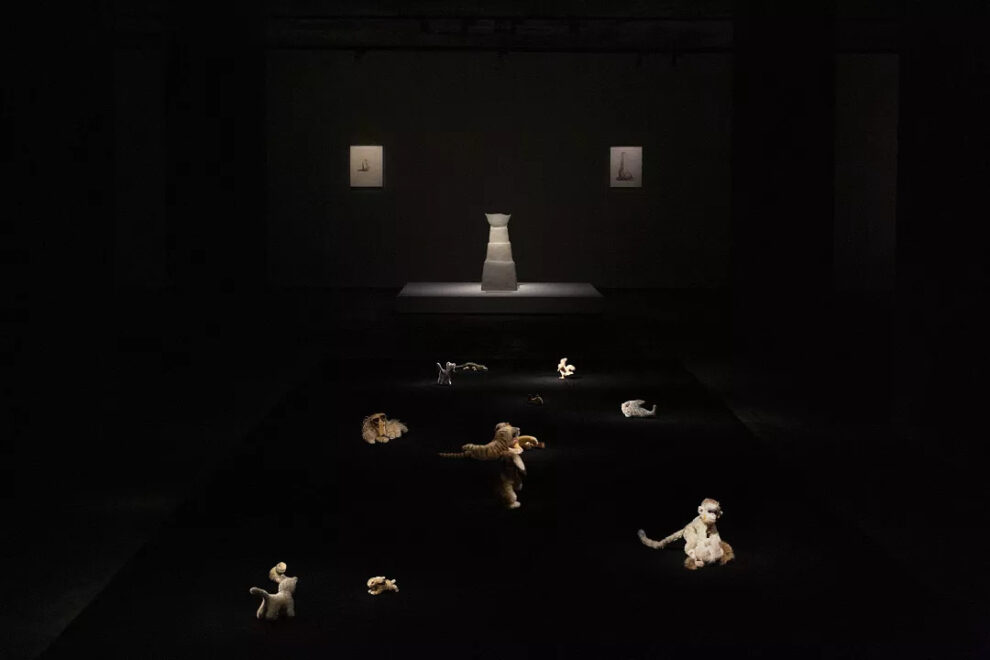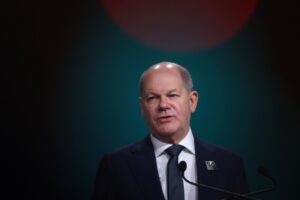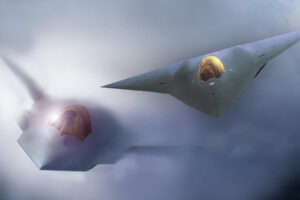In a new exhibition at Berlin’s Feuerle Collection, Leiko Ikemura’s sculptures and paintings are juxtaposed with her beloved stuffed animal collection.
Japanese-Swiss contemporary artist Leiko Ikemura has been collecting stuffed animals for years. It was never a conscious decision to start a collection; instead they came into her life in rather unexpected ways over the years.
When German art collector Désiré Feuerle came to her apartment for dinner recently and discovered her stuffed animals, he was so delighted by them that he invited Ikemura to collaborate with him on an exhibition. He wanted to juxtapose the toys with art Ikemura has created throughout her career.
“I do things intuitively,” Feuerle told Euronews Culture. “I saw (her stuffed animals), and I thought, why are we not doing this? I think it’s nice to feel her work in a different way, with her (stuffed animal) collection around it, because this is part of her life. She loves them. She really loves them.”
That’s how “When Animals Become Art” came to be.
The exhibition, currently on display at The Feuerle Collection, Feuerle’s private museum located in a former telecommunications bunker in Berlin, takes a unique look at the 72-year-old’s artist’s body of work.
That’s how “When Animals Become Art” came to be.
The exhibition, currently on display at The Feuerle Collection, Feuerle’s private museum located in a former telecommunications bunker in Berlin, takes a unique look at the 72-year-old’s artist’s body of work.
Ikemura’s sculptures sink into soft velvet pillows and stand proudly on dark pedestals, lit dramatically from above, shining islands in the minimalistic exhibition space called the “Silk Room.”
The centrepiece of the exhibition is a long, black velvet blanket upon which her stuffed animals – tigers, rabbits, fish, birds – lounge lazily, contemplating visitors as they walk past.
“These stuffed animals for me are like living things, that’s why I collected them,” Ikemura told visitors during an artist talk as part of Berlin Art Week. “My entire career, over the last 40 years, has been about animals. Humans are animals, and animals are humans, this is a point I always try to show in my work – this transcendental quality of being animalistic.”
With a career spanning more than three decades, Ikemura has had more than 500 solo and group exhibitions, in over 29 countries. Her work traverses different mediums, from painting to sculpture to poetry to illustration. She has lived in Spain and Switzerland before settling in Berlin, a city she’s called home for the past three decades.
“I have seen the Berlin of 30 years ago, 20 years ago, you felt like the city was still wounded, it was full of traces of bombs,” Ikemura told Euronews Culture. “Now it’s less and less so, but it’s in my history as well in Japan. It was interesting to live confronted with this hard and difficult past, and it challenges me to go and deal with it with my art.”
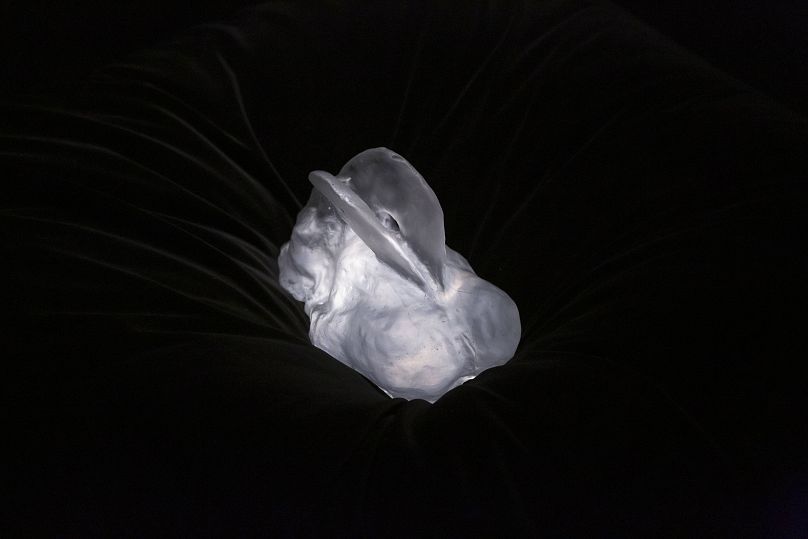
The exhibition features a selection of works she created in Berlin, chosen by both Ikemura and Feuerle – including glassworks of animals like the erotic “Transparent Hare”, glazed terracotta sculptures like “Usagi” (Hare) and paintings done on jute.
A dialogue between two artists
Ikemura speaks enthusiastically about the experience of working with Feuerle, a meticulous curator with a punishing eye for details. Feuerle’s museum director Daniele Maruca says the collector will sometimes spend hours moving pieces a few centimetres, making sure the light hits them just right and the feeling of moving through the exhibition is exactly how he wants it.
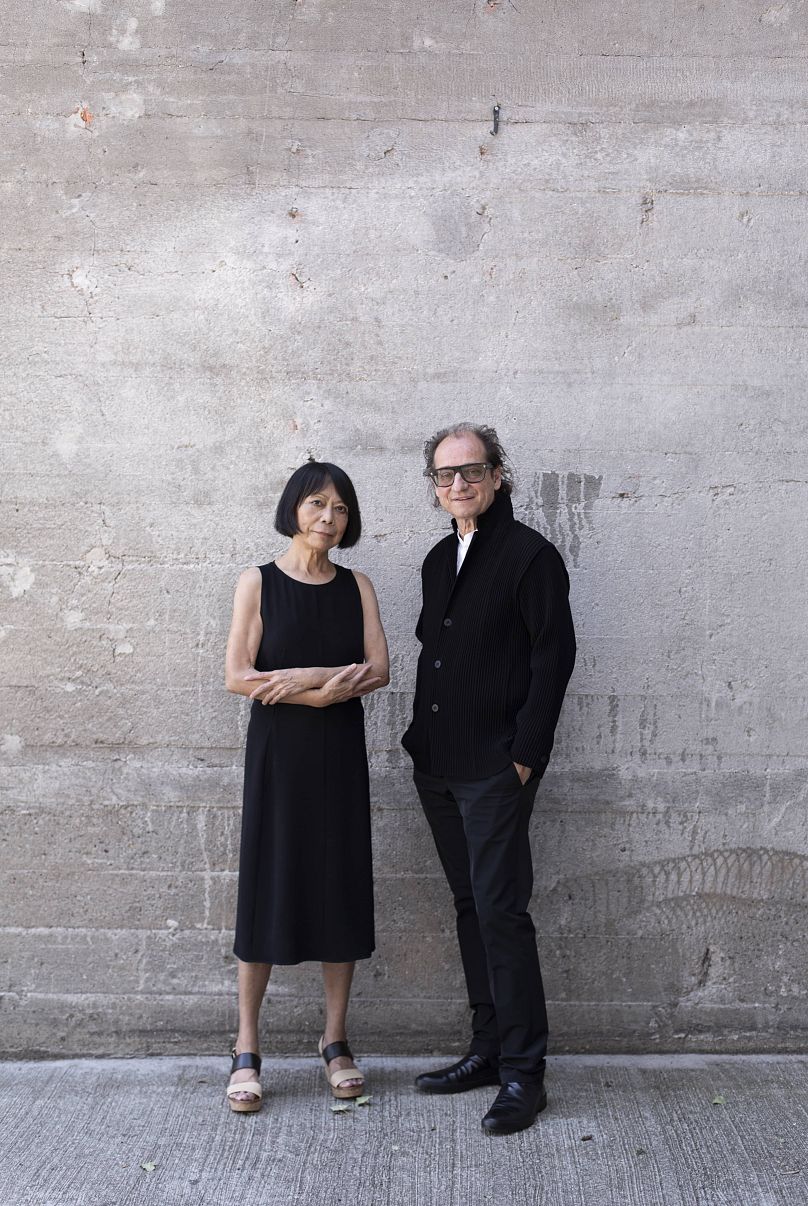
“When Animals Become Art” is a deeply personal show that not only highlights Ikemura’s works, but also Feuerle’s perception of them.
“This was also for me, like I’m working with another artist,” Ikemura said. “The positioning of these animals is an instinct and feeling that (Feuerle) sends but in a nice way, because it’s not competitive at all. I was surprised when I came here before the opening, because this is exactly what I would have done, but with surprising aspects.”
For Feuerle, following his intuition is primordial when it comes to creating exhibitions, which is why Ikemura’s work is so striking to him. His goal with this exhibition was to transform how people experience her work by putting it into a different context.
“I’ve known the work of Leiko for years, but I tried to install it in a way so you could feel her work in a different way,” Feuerle said. “We do not have a wall, we have a silk wall. I thought it was beautiful that the rabbit sculpture sinks in and looks out, and the soft materials, animals are soft.”
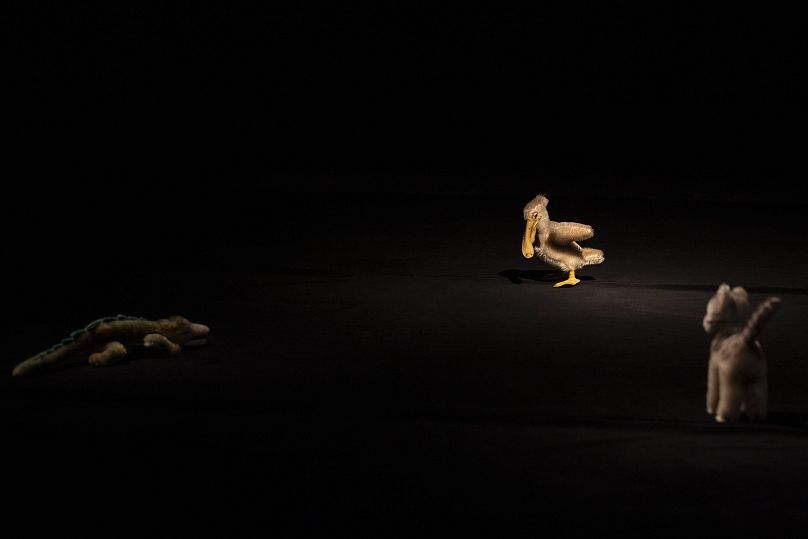
The “Silk Room” is separated from the rest of Fuerle’s museum by the darkest black silk curtains. They are so dark, in fact, that Fuerle had to get them custom-made from Jim Thompson Silk in Thailand. (“They’d never done it in black before,” he says.)
“It was also the space that allowed this kind of experiment,” Ikemura said. “It’s a completely different kind of exhibition than we are used to. It makes sense, this softness and hard architecture.”
Experimenting with space to ‘feel’ art differently
Ikemura is the second artist to be featured in a temporary exhibition at The Feuerle Collection, since the Silk Room officially opened last year.
The temporary exhibition space is an extension of Feuerle’s philosophy at his private museum, which houses his substantial collection of ancient and contemporary Asian art.
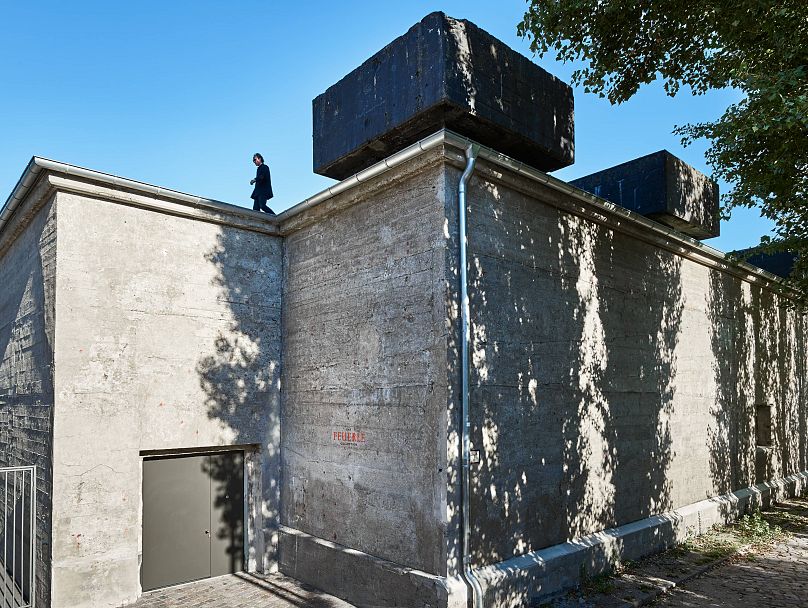
In the sprawling, dark rooms of the former World War II bunker, pieces are juxtaposed in surprising ways – an intricately carved chair from the early Ming dynasty era might sit in front of a photograph by Japanese legend Nobuyoshi Araki of a naked Tokyo prostitute spreading her legs.
“He understands space and light unlike anyone I’ve ever met,” Maruca said of Feuerle, who he called one of the pioneers of juxtaposition. “He’s known for finding connections between art pieces that aren’t immediately related, which come from different cultures and times. It’s an artistic and curatorial process.”
Feuerle’s influence goes beyond the artwork and is felt down to the finest detail of the environment. He hired British minimalist architect John Pawson to refurbish the building while keeping its main structural characteristics intact – stalactites protrude from the ceiling and water stains bloom across the concrete walls and floor.
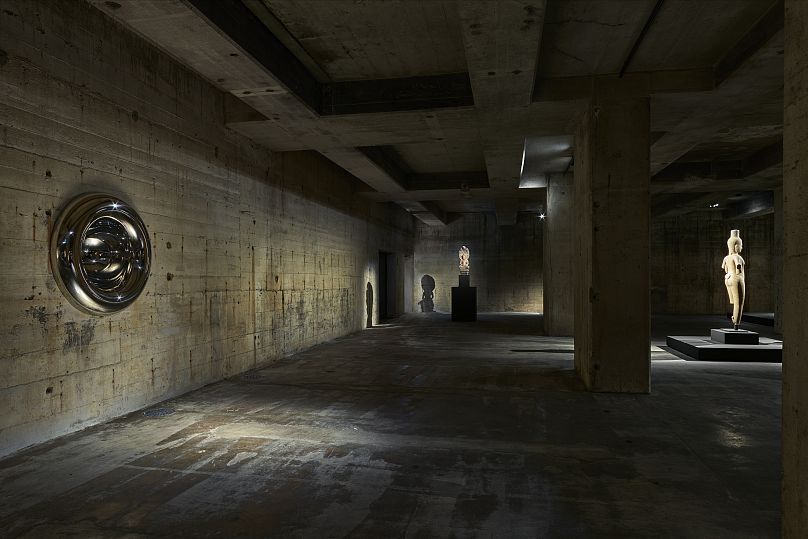
The tour is also a reflection of Feuerle’s vision for how art should be consumed – it begins with a passage through the “Sound Room,” a pitch-black space where the haunting piano notes of John Cage reverberate across the cool concrete walls. Feuerle calls it a “cleansing from daily life” before entering the exhibition space, an invitation to enter his world.
There is no cell service in the bunker and taking photos and filming are not allowed. You’re meant to “feel” the art without any outside interference.
Along one side of the first floor is the Lake Room, a 2500-square metre space flooded with 100,000 litres of water, which can be seen through glass windows. The still water reflects the ceiling like a mirror, creating a disorienting illusion of extraordinary depth, broken only when the occasional ripple forms across the water’s surface.
There are no labels on any of the artwork and the tour guides won’t explain any of the pieces unless asked: “They’re there if you have a question, but they should not talk. I think that’s beautiful, you feel (the art). But if you have a question, they answer,” Feuerle says.

The museum also hosts a plethora of activities throughout the year.
On Thursday evenings, there is a meditation session – visitors are given a yoga mat and a blanket and invited to sit wherever they like in the exhibition space for an hour. Every first Saturday of the month, it holds a “gong bath”.
For a select few (who are willing to shell out €600), there is an exclusive incense ceremony approved by a Taiwanese incense master. The museum also recently opened its rooftop garden for outdoor film nights.
The multi-pronged approach appears to have resonated with a younger crowd – Maruca says the average age of visitors to The Feuerle Collection is 25. Of course, guests under age 26 pay half price on general admission tickets, which normally cost €22.
What’s certain is the experience is as unique as its creator, a completely immersive trip through Désiré Feuerle’s mind, his genuine appreciation for pan-Asian culture and his minutiose and discerning eye as a curator.
“I would like to do more curating projects in the world,” Feuerle says. “It’s something I feel I enjoy, and I think I can do things differently from others. And I think there is a need also, to do things sometimes in a different way.”
“When Animals Become Art” by Leiko Ikemura at The Feuerle Collection is open to the public from 7 July 2023 until 7 January 2024.
Source : euronews

